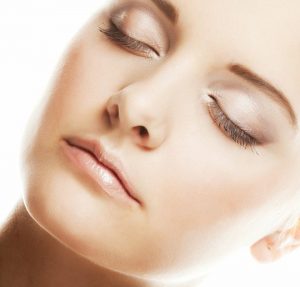 In the ever-evolving world of cosmetic enhancements, eyelid filler has emerged as a popular non-surgical option for those looking to rejuvenate their eye area. This innovative procedure promises to reduce signs of aging and fatigue, giving you a more refreshed and youthful appearance. Whether you’re considering eyelid fillers for cosmetic reasons or to address concerns related to aging, understanding what this treatment entails is crucial for making an informed decision. Khan Eyelid and Facial Aesthetics, led by oculoplastic and reconstructive surgeon Dr. Tanya Khan, provides eyelid filler to patients in Plano, Dallas, Austin, Texas, and surrounding locations.
In the ever-evolving world of cosmetic enhancements, eyelid filler has emerged as a popular non-surgical option for those looking to rejuvenate their eye area. This innovative procedure promises to reduce signs of aging and fatigue, giving you a more refreshed and youthful appearance. Whether you’re considering eyelid fillers for cosmetic reasons or to address concerns related to aging, understanding what this treatment entails is crucial for making an informed decision. Khan Eyelid and Facial Aesthetics, led by oculoplastic and reconstructive surgeon Dr. Tanya Khan, provides eyelid filler to patients in Plano, Dallas, Austin, Texas, and surrounding locations.
What Is Eyelid Filler and How Does It Work?
Eyelid filler, commonly referred to as under-eye filler, addresses aesthetic concerns like dark circles, hollows, and fine lines around the eyes. The procedure involves injecting dermal fillers, usually made from hyaluronic acid, into the delicate skin under the eyes. Hyaluronic acid is a naturally occurring substance in the body that helps retain moisture and provides a plump, hydrated appearance to the skin.
The primary goal is to add volume to the under-eye area, smoothing out depressions and creating a more even surface. This can help reduce the appearance of tired eyes, making you look more awake and alert. The procedure is minimally invasive, and results are often noticeable immediately, making it an attractive option for those seeking quick improvements without the downtime associated with surgery.
Benefits of Eyelid Fillers
Eyelid fillers offer a multitude of benefits, making them an appealing choice for many seeking cosmetic enhancement. One of the most notable benefits is the ability to achieve quick, noticeable results without the need for invasive surgery. This makes eyelid fillers an excellent option for those who want to improve their appearance with minimal downtime.
Another advantage is the customizable nature of the treatment. Eyelid fillers can be tailored to suit individual needs, addressing specific concerns like fine lines, hollows, and dark circles with precision. This ensures a natural-looking result that harmonizes with your facial features. Additionally, because the primary component of most fillers is hyaluronic acid, a substance naturally found in the body, the treatment is generally well-tolerated and integrates seamlessly with your skin.
The non-surgical aspect of eyelid fillers also means there is a lower risk of complications compared to surgical options. Recovery time is typically brief, with most patients able to resume their daily activities immediately after the procedure. This convenience is particularly beneficial for those with busy lifestyles who cannot afford extended downtime.
Eyelid fillers are also reversible, offering an extra layer of assurance for those hesitant about permanent changes. If the results are not as expected, an enzyme called hyaluronidase can be used to dissolve the filler, restoring the area to its pre-treatment state.
Lastly, the immediate improvement in the under-eye area often has a positive impact on overall facial aesthetics, contributing to a more youthful and revitalized appearance. This can boost self-confidence and enhance one’s social and professional interactions. Overall, eyelid fillers present a versatile, effective solution for various cosmetic concerns, making them a popular choice in the realm of non-surgical facial rejuvenation.
The Procedure: What to Expect
During your consultation, your provider will assess your facial anatomy, discuss your goals, and select the most appropriate filler and technique. The actual procedure takes place in a clinical setting and usually lasts 15 to 30 minutes.
To begin, the treatment area is cleaned, and a topical anesthetic may be applied to minimize discomfort. Using a fine needle or cannula, the practitioner injects the filler into the under-eye area, strategically placing it to achieve the desired effect. The injections are generally well-tolerated, with most patients experiencing only mild discomfort.
Post-procedure, you might notice some swelling, redness, or bruising around the injection sites, but these are typically temporary and resolve within a few days. You can often return to your normal activities immediately, which makes eyelid fillers a convenient choice for those with busy schedules.
Who Is a Good Candidate for Eyelid Fillers?
Eyelid fillers are an excellent option for individuals looking to address under-eye hollows, dark circles, and fine lines without undergoing surgery. Ideal candidates are typically in good overall health and have realistic expectations about the results. It’s essential for candidates to understand that while eyelid fillers can offer significant improvements, they may not be a permanent solution and will require periodic touch-ups to maintain the desired look.
Candidates should also have mild to moderate concerns that do not necessitate surgical intervention. For instance, those with pronounced under-eye bags or severe skin laxity may not achieve the best results with fillers alone and might be better suited for surgical options like blepharoplasty. It’s crucial to consult with a qualified provider who can assess your specific needs and determine the most appropriate treatment plan.
Age is another factor to consider. While there’s no strict age limit for eyelid fillers, younger individuals may benefit from the procedure if they have genetic predispositions to dark circles or hollows. Conversely, older candidates should have sufficient skin elasticity to support the filler and achieve natural-looking results.
Lifestyle factors also play a role in determining candidacy. Those with busy schedules who cannot afford extended downtime may find eyelid fillers particularly appealing due to the minimal recovery time. However, individuals with certain medical conditions, allergies, or a history of adverse reactions to dermal fillers should discuss these issues with their provider to ensure safety.
Psychological readiness is equally important. Prospective candidates should be mentally prepared for the procedure, understanding both its benefits and limitations. This includes being aware of the temporary side effects like swelling, redness, and bruising, and knowing how to manage them effectively.
A thorough consultation with a skilled and experienced provider will help you determine if eyelid fillers are the right choice for your aesthetic goals. This assessment will take into account your medical history, skin condition, and personal preferences to ensure the best possible outcome.
Aftercare and Recovery Tips
Proper aftercare is crucial to enhance the effectiveness of your eyelid filler treatment and to reduce any potential side effects. Right after the procedure, refrain from touching or massaging the treated area to prevent the filler from moving out of place. It’s also wise to avoid strenuous activities, prolonged sun exposure, and extreme temperatures for at least 24 to 48 hours post-treatment.
To help alleviate swelling and bruising, you can use a cold compress on the area as needed. Staying well-hydrated and following a consistent skincare regimen can also support the durability of your results. Ensure you apply a high-quality moisturizer and sunscreen to protect your skin and maintain its health.
Sleeping with your head elevated for the first night can help minimize swelling. Try to sleep on your back to avoid any pressure on the treated area. Over-the-counter pain relief, like acetaminophen, can be used to manage any discomfort, but avoid medications like aspirin or ibuprofen, as they can increase the risk of bruising.
If you notice any unusual symptoms, such as persistent pain or signs of infection like redness and increased swelling, contact your provider immediately. They can offer guidance and, if necessary, adjust your treatment plan to ensure optimal results.
Avoid makeup or skincare products containing strong chemicals near the treated area for at least 24 hours, as these can irritate the skin. Opt for gentle, fragrance-free products during the initial recovery period to minimize the risk of adverse reactions.
Lastly, follow any specific instructions given by your provider, as they may have tailored recommendations based on your unique skin type and treatment specifics. Regular follow-up appointments will also help monitor your progress and make any necessary adjustments. Adhering to these aftercare tips will help you achieve the best possible outcome from your eyelid filler treatment.
Eyelid Fillers vs. Surgical Options
When considering eyelid rejuvenation, it’s crucial to evaluate the benefits and drawbacks of non-surgical eyelid fillers versus surgical solutions like blepharoplasty. Eyelid fillers provide a quick, minimally invasive option with immediate results and little to no downtime, making them ideal for individuals with busy schedules. They are particularly effective for mild to moderate issues like hollows, dark circles, and fine lines, offering a customizable approach to achieve natural-looking enhancements.
In contrast, blepharoplasty is a surgical procedure that delivers more significant and long-lasting results. It involves removing excess skin and fat, making it suitable for more pronounced concerns such as severe under-eye bags or sagging skin. While the results are often more dramatic, the recovery period for surgery is longer, and it carries a higher risk of complications.
Another key consideration is the reversibility of the treatments. Eyelid fillers can be dissolved if the outcome is not as desired, offering an added layer of reassurance for those hesitant about permanent changes. Surgical options, on the other hand, are irreversible, requiring a more committed decision-making process.
Cost can also be a determining factor. Non-surgical fillers are generally more affordable upfront, although they require periodic touch-ups to maintain results. Surgery, while more expensive initially, often yields longer-lasting outcomes that may prove cost-effective over time.
Ultimately, the choice between eyelid fillers and surgical options depends on your specific needs, lifestyle, and aesthetic goals. Consulting with a qualified provider can help you navigate these choices, ensuring you select the most suitable treatment for your circumstances.
CONTACT Khan Eyelid and Facial Aesthetics AND OCULOPLASTIC & RECONSTRUCTIVE SURGEON DR. TANYA KHAN TODAY TO SCHEDULE AN APPOINTMENT
For more information about procedures and treatments at Khan Eyelid and Facial Aesthetics by Ophthalmic surgeon Dr. Tanya Khan. Click here to contact us.
Taking patients from in and around Dallas, Plano, Fort Worth, Grapevine, Garland, Mesquite, Carrollton, Irving, Frisco, Texas and more.









Schedule a Consultation: 972-EYE-LIDS (393-5437)